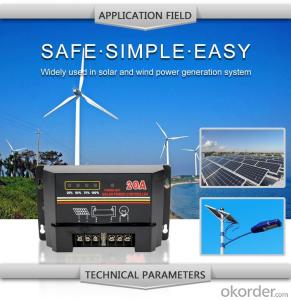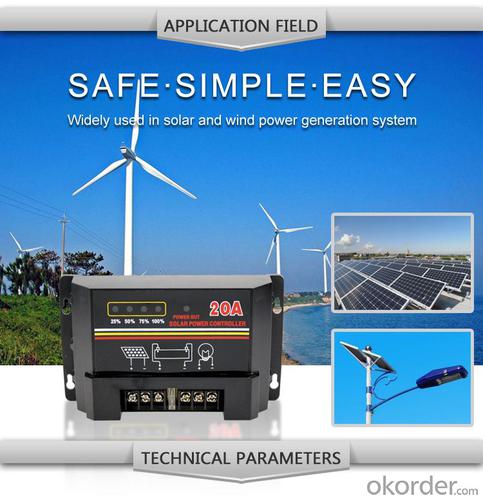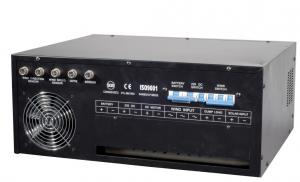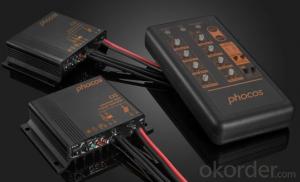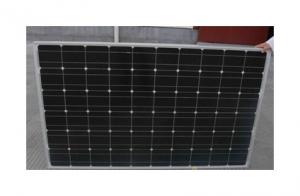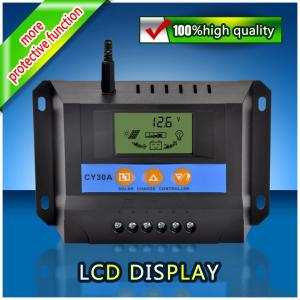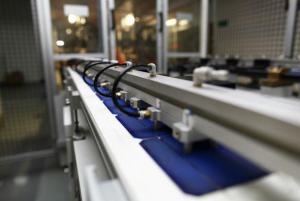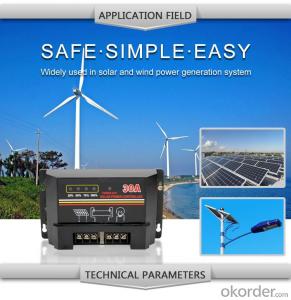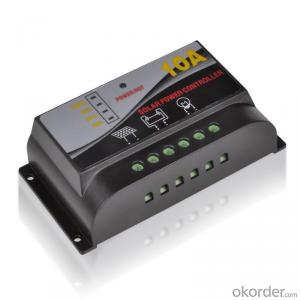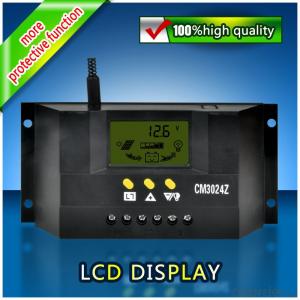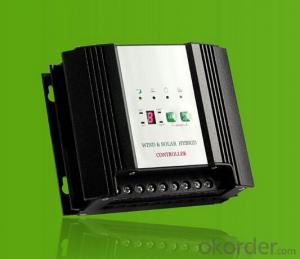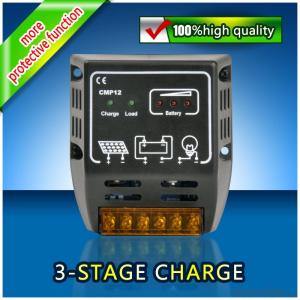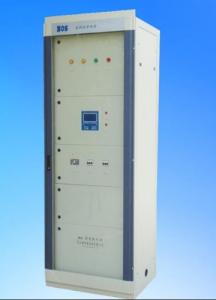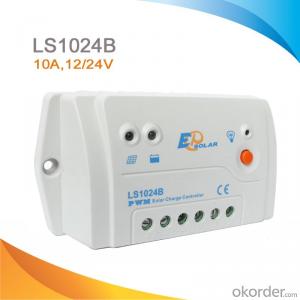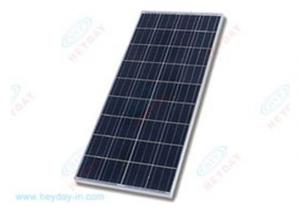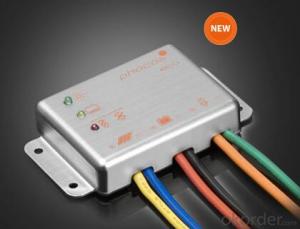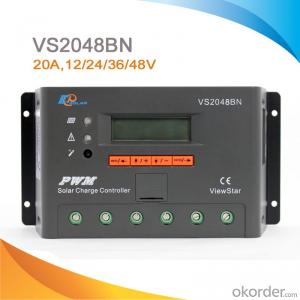Pwm 30A Solar LCD Controller with Best Price Hot Selling Model DM120A
- Loading Port:
- China main port
- Payment Terms:
- TT or LC
- Min Order Qty:
- 1 unit
- Supply Capability:
- 10000 unit/month
OKorder Service Pledge
OKorder Financial Service
You Might Also Like
Production Introduction
Solar controller is control device which can control solar panel and transform solar energy into electricity then store to the battery bank. Solar controller is the most important part in offgrid system, whose performance has much effect on life expectancy and operation of the whole system, especially the battery expectancy.
Application Areas
Standalone Photovoltaic power station
Standalone Domestic household photovoltaic power system
Mobil communication base stations, expressway and other non-residential regions.
Coastal islands, remote mountainous, border posts for regions shortage of or without electricity.
Government demonstration projects, landscape lighting project etc.
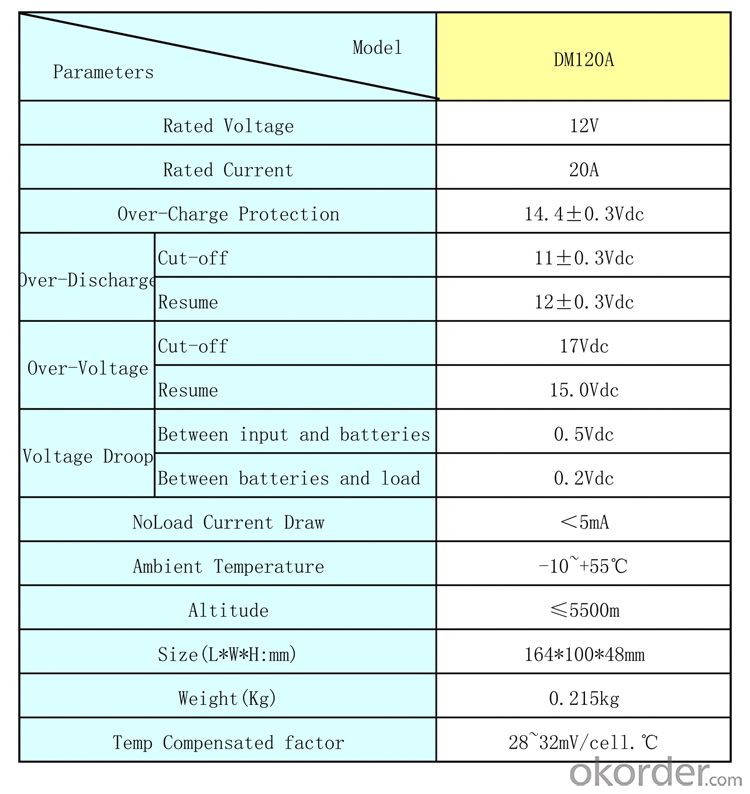
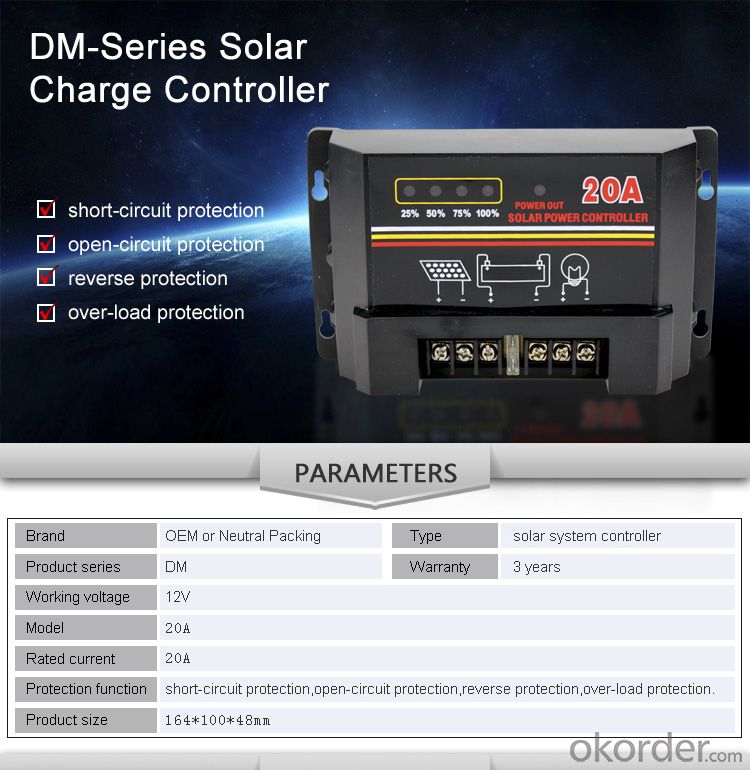
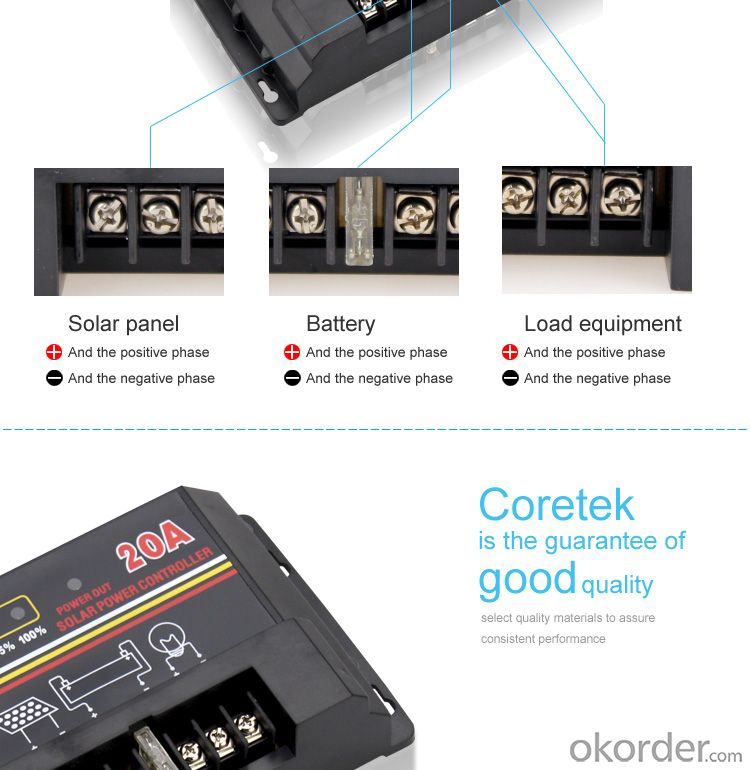
- Q: Can a solar controller be used with different types of solar panel fault detection systems?
- Yes, a solar controller can be used with different types of solar panel fault detection systems. The solar controller acts as the central hub for monitoring and managing the solar panel system, regardless of the specific fault detection system being used. It is designed to integrate with various types of fault detection systems, ensuring compatibility and efficient operation of the entire solar power system.
- Q: Can a solar controller be used with a solar-powered charging station for electric bikes?
- Yes, a solar controller can be used with a solar-powered charging station for electric bikes. The solar controller helps regulate and optimize the flow of energy from the solar panels to the charging station, ensuring efficient charging of the electric bikes' batteries.
- Q: How does a solar controller protect batteries from deep discharge?
- A solar controller protects batteries from deep discharge by monitoring the battery voltage and disconnecting the load when the voltage drops below a certain threshold. This prevents the batteries from being drained too much, which can lead to irreversible damage and reduced battery life.
- Q: Can a solar controller be used with a battery bank that has different state of charge levels?
- Yes, a solar controller can be used with a battery bank that has different state of charge levels. The solar controller regulates the charging process and ensures that each battery in the bank is charged to its optimal level, regardless of the differences in state of charge. This helps to maintain the overall health and performance of the battery bank.
- Q: What certifications or standards should I look for when selecting a solar controller?
- When selecting a solar controller, there are several certifications and standards that you should look for to ensure that you are choosing a reliable and high-quality product. Some of the key certifications and standards to consider are: 1. UL (Underwriters Laboratories) Certification: UL certification ensures that the solar controller meets the safety standards set by UL. It guarantees that the product has been thoroughly tested and is safe to use. 2. CE Marking: The CE marking indicates that the solar controller complies with the European Union's health, safety, and environmental protection standards. This certification ensures that the product meets the necessary requirements for distribution and use within the European Economic Area. 3. RoHS Compliance: RoHS (Restriction of Hazardous Substances) compliance ensures that the solar controller does not contain any harmful substances such as lead, mercury, or cadmium. This certification ensures that the product is environmentally friendly and safe for use. 4. ISO 9001: This certification indicates that the manufacturer follows an internationally recognized quality management system. ISO 9001 certification ensures that the solar controller has undergone rigorous quality control processes, providing assurance of its reliability and performance. 5. IEC (International Electrotechnical Commission) Standards: Look for solar controllers that comply with relevant IEC standards, such as IEC 62109-1 for safety requirements and IEC 62509 for performance testing. Compliance with these standards ensures that the solar controller meets specific technical requirements for safety and performance. 6. IP Rating: The IP (Ingress Protection) rating determines the level of protection provided by the solar controller against dust and water ingress. Look for a solar controller with a high IP rating, such as IP65 or higher, to ensure its durability and protection against harsh environmental conditions. By considering these certifications and standards when selecting a solar controller, you can be confident that you are choosing a product that meets the necessary safety, environmental, and performance requirements.
- Q: Can a solar controller be used with solar panels that are connected to a solar tracker?
- Solar panels connected to a solar tracker can utilize a solar controller. The purpose of a solar tracker is to automatically align the solar panels with the movement of the sun, maximizing their exposure to sunlight. In contrast, the solar controller is responsible for regulating the flow of electricity from the solar panels to the battery bank or grid. When solar panels are connected to a solar tracker, they continuously adjust their position to capture the maximum amount of sunlight. This adjustment can cause fluctuations in voltage and current output. To manage these fluctuations, a solar controller monitors the electrical parameters and adjusts the charging process accordingly. By doing so, it ensures that the solar panels charge the battery efficiently and prevents overcharging or undercharging. As a result, a solar controller is crucial for the proper functioning and optimization of solar panels connected to a solar tracker. It helps maintain the overall performance and longevity of the solar system by regulating the charging process, protecting the battery, and providing significant data on the solar system's performance.
- Q: Can a solar controller be used with solar arrays of different voltages?
- Solar controllers are capable of being used with solar arrays of varying voltages. Their purpose is to regulate and control the charging process of batteries using solar panels. These controllers typically possess a wide input voltage range and can handle different voltages from various solar arrays. Their main function is to ensure that batteries are charged efficiently and safely, regardless of the voltage of the solar panels. They achieve this by converting the higher voltage from the solar panels to match the charging requirements of the batteries. Consequently, as long as the solar controller is compatible with the specific voltage range of the solar panels, it can be utilized with solar arrays of different voltages.
- Q: Can a solar controller be used with solar-powered indoor ventilation systems?
- Solar-powered indoor ventilation systems can indeed utilize a solar controller. The role of a solar controller is to regulate the transfer of electricity from solar panels to the ventilation system. Its purpose is to enhance the system's efficiency and effectiveness, thereby maximizing the utilization of solar energy. Regardless of whether the ventilation system is installed indoors or outdoors, both the solar panels and the ventilation system can be linked to the solar controller. This connection allows for power supply management and optimal system performance.
- Q: How do you connect a solar controller to a solar panel?
- To connect a solar controller to a solar panel, you would typically start by identifying the positive and negative terminals on both the solar panel and the solar controller. Then, you would attach the positive wire from the solar panel to the positive terminal on the solar controller, and do the same with the negative wire. This allows the solar controller to regulate the incoming power from the solar panel and efficiently charge a battery or power a load.
- Q: How do you prevent battery under-temperature with a solar controller?
- One way to prevent battery under-temperature with a solar controller is by utilizing a temperature sensor. The controller should be equipped with a temperature sensor that constantly monitors the temperature of the battery. If the temperature drops below a certain threshold, the controller can activate a heating system to warm up the battery and prevent it from getting too cold. This ensures optimal performance and longevity of the battery in colder climates or during winter months.
Send your message to us
Pwm 30A Solar LCD Controller with Best Price Hot Selling Model DM120A
- Loading Port:
- China main port
- Payment Terms:
- TT or LC
- Min Order Qty:
- 1 unit
- Supply Capability:
- 10000 unit/month
OKorder Service Pledge
OKorder Financial Service
Similar products
Hot products
Hot Searches
Related keywords
